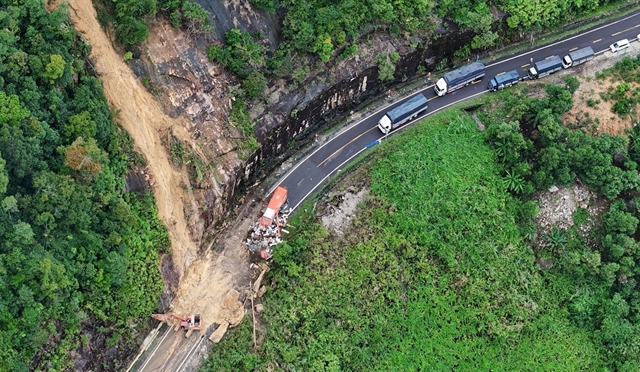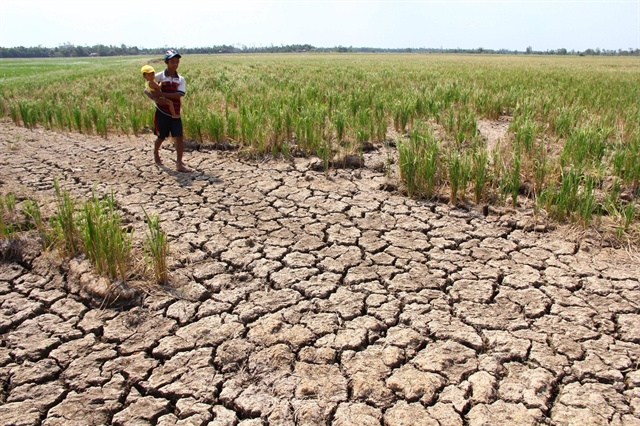 Environment
Environment


|
| Along with Mekong Delta, the central region will suffer prolonged drought and saline intrusion during the rest of this year’s dry season. — Photo https://baoquangngai.vn |
HÀ NỘI — Along with Mekong Delta, the central region will suffer prolonged drought and saline intrusion during the rest of this year’s dry season, experts warned.
From March to May, coastal provinces of Thanh Hoá, Ninh Thuận, Bình Thuận, Central Highlands and southeast localities are predicted to witness severe water shortages, Châu Trần Vĩnh, deputy head of Department of Water Resources Management said on Friday.
Rivers levels are dropping, 25 to 75 per cent lower than the previous years’ average, Vĩnh said. Four out of eleven river basins are facing water shortages including Hương River in Thừa Thiên-Huế Province, Thu Bồn River in Quảng Nam Province and Ba River in Phú Yên Province, therefore, reservoirs have been restricted to not open floodgates since the beginning of February.
According to Mai Văn Khiêm, director of the National Centre for Hydro-Metrological Forecasting, most central provinces still have sufficient water supply for farming.
Saline intrusion may hit Mã River and Vu Gia River as reservoirs reach the minimum water level. The amount of water flowing into rivers has remained low, ranging from eight to 25sqm per second. The remaining volume of Vu Gia River is as low as 470 million cu.m.
Northern rivers lack 20 to 50 per cent water volume, compared to the last years’ average, especially in provinces of Lai Châu, Sơn La and Yên Bái as the rainfall declined in February according to Khiêm.
Saline intrusion has entered deeper in the Mekong Delta, especially during spring tides from January 9 to 12 and February 22 to 28. Salinity recorded at downstream of rivers of Tiền, Hậu and Vàm Cỏ is equivalent and even higher than the same period in 2016 when the historic drought hit the Delta.
Lê Công Thành, deputy minister of Natural Resources and Environment, asked Việt Nam National Mekong Committee and the National Centre for Hydro-Metrological Forecasting to keep updating information about water security issues in the Mekong Delta.
“Scientists predict saline intrusion will happen more regularly. Therefore, the Việt Nam Institute of Meteorology, Hydrology and Climate Change is to report developments from now until 2030 for the ministry to come up with solutions on water storage in the area,” said Thành.
A report issued by the World Bank in 2019 predicts the rising level of water-related threats could reduce Việt Nam’s GDP by 6 per cent by 2035. At the same time, the rising demands of water are forecast to harm 11 out of 16 basins in the country by 2030. — VNS




